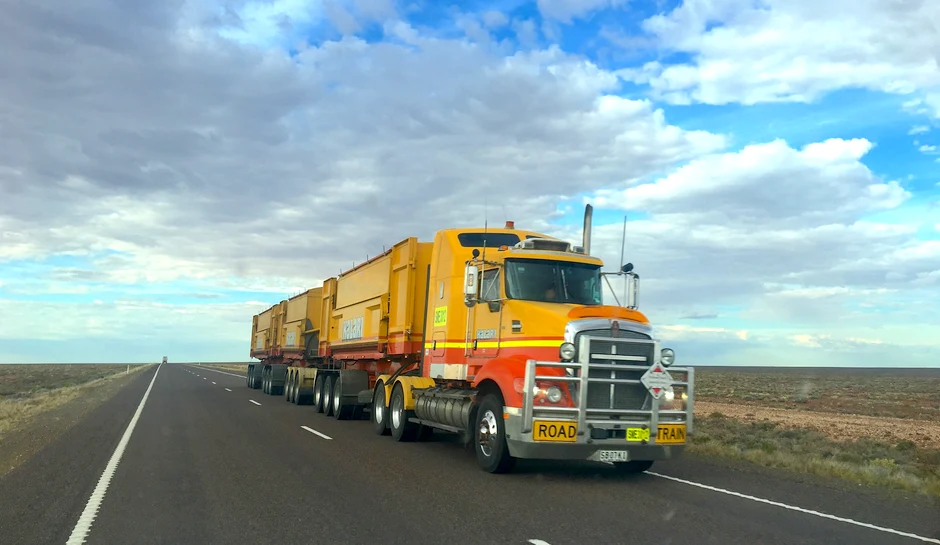
With the imminent 3G network shutdown, businesses with existing IoT devices that rely on this technology may face new challenges. However, the good news is that the transition to other available technologies like 4G, 5G and 0G can offer a variety of benefits, including improved capabilities, lower costs, and better device management.
This process, known as the ‘3G sunset’ is happening globally and is fast approaching regions like Australia, New Zealand, Hong Kong and Macau.
Even though this may seem like a daunting prospect, it’s important to remember that it is also an opportunity to upgrade and improve your operations, especially in the current challenging landscape. With an upgrade being inevitable, it makes sense to maximise your gains and plan well ahead.
We are here to help you get on the front foot to ensure a seamless migration. In this article, we will explain what the 3G sunset is, how it will affect IoT devices, and how upgrading to other technologies can help your business remain efficient and effective.
What is the 3G Sunset?
The 3G sunset refers to the process of phasing out the 3G technology in a given region and replacing it with other technologies like 0G, 4G or 5G. Since 2001, 3G has been the predominant technology for wireless mobile telecommunications, but as mobile network operators move towards more advanced networking capabilities, they have committed to phasing out 3G connectivity.
This transition will not happen overnight. Major telecommunications companies in regions like Australia, New Zealand, Hong Kong, and Macau are gradually ending support for 3G network devices and infrastructure, and they are encouraging users to upgrade their technology.
3G sunset dates
The 3G network shutdown does not have a universal deadline. Instead, carriers around the world have independent indicative dates and some have already shut down their 3G networks.
In Australia, as of the time of writing this article, the indicative date for Vodafone’s 3G shutdown is in December 2023. While Telstra’s is in June 2024, but they recommend to migrate IoT devices now.
In New Zealand, the 3G network shutdown began in July 2018, and carriers like Vodafone aim to complete it by late 2024.

The phasing out of 3G technology is an essential milestone in the evolution of mobile communication technology. Although it may create temporary challenges for IoT fleets, it will eventually open up opportunities for more advanced and effective connectivity options.
Ken Otsuki,
Head of Global Carrier Relations at Soracom
Will IoT devices work after the 3G shutdown?

The answer is simple, once the 3G networks are completely shut down, older IoT devices may become inoperable. This means that IoT fleets will need to invest in updated hardware and new connectivity solutions to keep their devices up and running.
More than half of all IoT devices that are currently relying on cellular connectivity to transmit data and connect to the internet will be affected by the 2G and 3G sunset, according to a report published by James Brehm & Associates in 2019.
As the 3G network is phased out, 2G/3G capable devices will no longer be able to connect to the network in countries where 2G has already sunset. While in countries with 2G networks, the devices will have slower data transmission and could experience timeouts.
3G/4G capable devices would still be able to communicate, but communication will be lost if they go outside 4G coverage, due to the lack of 3G backup. Despite this, many companies have delayed upgrading their IoT devices due to the complexity of updating numerous devices and their underlying management architecture.
The cost of replacing these devices can also be substantial, and the transition can be a challenge for companies that rely on IoT devices for their operations. Businesses are also concerned about the potential security risks posed by emerging technologies.
Impact on Industrial, Manufacturing and Trucking Sectors
Industrial and manufacturing companies are one of the sectors that will face the impact of the 3G network shutdown. Some of them have windmills that connect to the 3G network, which will require an upgrade before it is turned off in their region. Failure to upgrade these devices could lead to lost data and decreased efficiency, as they will no longer be able to connect to the internet.
The global shortage of microchips has also made it difficult for many IoT fleets to update their devices. The trucking industry will be particularly hard-hit by the 3G sunset, as electronic logging devices used by truckers to record driving hours will become inoperable. In response, the Australian Federal Motor Carrier Safety Administration has started compiling a list of devices that will stop working soon.
How to prepare your business for the 3G Network Shutdown

Despite the challenges posed by the 3G sunset, there are several connectivity options for IoT devices and projects that need to be upgraded or replaced.
If your IoT devices are connected to the 3G network, it is important to prepare for the sunset. The first step is to determine which of your devices are still using 3G technology and what their replacement options are.
You may be able to replace some devices with 4G or 5G compatible devices, but for others, you may need to consider alternative solutions, such as upgrading to a new device or switching to a different type of network like 0G.
4G LTE and 5G offer considerable processing upgrades over 2G and 3G, but the costly infrastructure upgrades may put them out of reach for some fleets.
For low data and power usage, LPWAN technologies like LTE-M or Thinxtra’s 0G Network, may be a better fit for some deployments. LPWANs support data transfers up to 1 Mbps over a wider area than 3G or 4G networks, making it ideal for larger-scale projects like asset tracking or Smart City installations.

The 3G network shutdown is a chance for businesses to upgrade and enhance their operations, particularly in these challenging times. Upgrading is unavoidable, so it's wise to capitalise on the opportunity, reduce costs and make the businesses future-proof, plan well ahead and engage the right partner to maximise the benefits and ensure continuity of service.
Sam Sharief,
Chief Operating Officer at Thinxtra
Join the evolution of technology

The 3G sunset is an inevitable part of the evolution of technology in the telecommunications industry. While it may present challenges for users of IoT devices, there are steps you can take to prepare and ensure a smooth transition.
According to the Enterprise IoT Connectivity Survey, conducted by Transforma Insights, 58% of their respondents found that going through a migration from 2G/3G to other technologies brought significant benefits for their enterprises. Some of the benefits were better capabilities, lower cost, and better management of devices.
The great news is that there are several connectivity options available, each with its own advantages and disadvantages. Whether you choose 4G LTE, 5G or LPWAN, it’s essential to evaluate your IoT deployment requirements and choose the option that best meets your needs.
With the right connectivity solution, you can ensure that your IoT project remains reliable, secure, and cost-effective for years to come. By staying informed and proactive, you can minimise the impact of the 3G sunset on your IoT devices and ensure that your operations are not disrupted.
Soracom’s blended network approach, Soracom Arc, enables users to utilise a wide range of IoT connectivity options, including cellular, Ethernet, WiFi and satellite. This ensures highly reliable connectivity for your deployment.
Unsure about transitioning from 2G or 3G? Our IoT specialists can assist you in identifying suitable coverage and developing a migration strategy.

